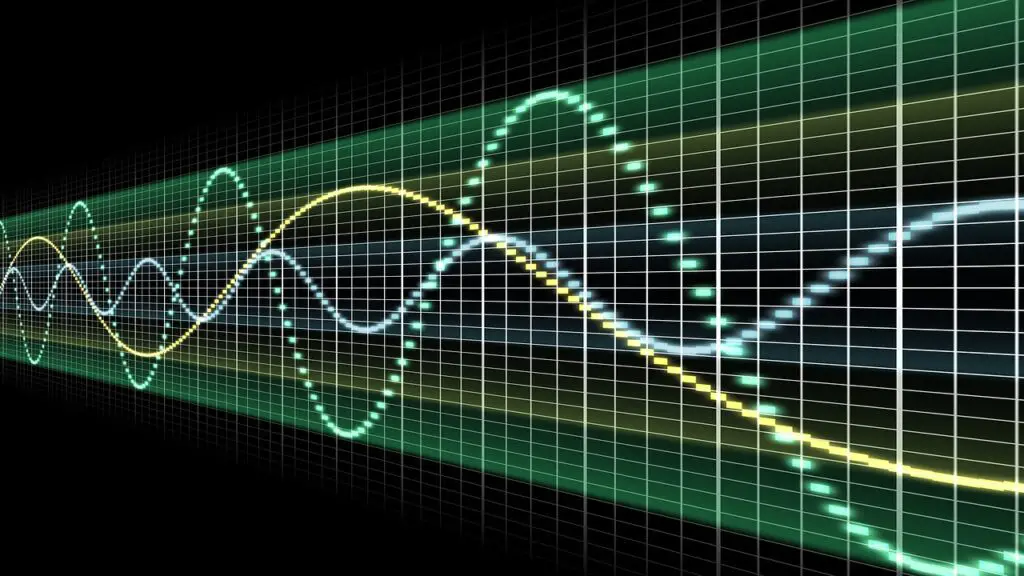Frequency response is a term that is often used in the audio industry to describe the range of frequencies that a device or system can accurately reproduce. In simple terms, it refers to the ability of a speaker, amplifier, or other audio equipment to reproduce sound across a range of frequencies accurately. The range of frequencies that a device can reproduce is typically measured in hertz (Hz) and is often referred to as the frequency range.
What Is Frequency Response?
Frequency response is a term used to describe the range of frequencies that an audio component, such as a speaker or headphones, can produce. It is measured in Hertz (Hz) and indicates the lowest and highest frequencies the component can reproduce. Understanding frequency response is essential in selecting the right audio equipment.
Table of Contents
- What Is Frequency Response?
- Why Is Frequency Response Important?
- How Is Frequency Response Measured?

Regarding audio quality, frequency response is an important factor to consider. A device with a wide frequency range can reproduce a wider range of sounds, resulting in a more accurate and detailed audio experience. However, it’s important to note that frequency response is not the only factor that affects sound quality. Other factors, such as distortion, noise, and phase shift, can also impact the overall sound quality of an audio system.
Frequency Response Range
The frequency response range is the frequency range produced by an audio component. For example, a speaker may have a frequency response range of 20Hz to 20kHz. This means it can produce frequencies as low as 20Hz and as high as 20kHz. The frequency response range is important because it determines the types of sounds that an audio component can produce.
Flat Frequency Response
A flat frequency response means that an audio component produces all frequencies at the same level. This is important for accurate sound reproduction. When an audio component has a flat frequency response, its sound is not biased toward any particular frequency. This is important for music production and recording, ensuring the sound is reproduced accurately.
Frequency Response Graphs
A frequency response graph is a visual representation of the frequency response of an audio component. It shows how the component responds to different frequencies. The graph is usually displayed as a line graph, with frequency on the x-axis and level on the y-axis. The graph can be used to determine the frequency response range and any deviations from a flat frequency response.
Understanding frequency response is essential in selecting the right audio equipment. It is important to consider the frequency response range, flat frequency response, and frequency response graphs when selecting speakers, headphones, or other audio components.
Why Is Frequency Response Important?
Frequency response is essential for anyone who wants to make an informed decision about audio equipment. Understanding frequency response is critical because it affects how the listener experiences the sound. This section will explore the importance of frequency response and its components.
Components of Frequency Response
Frequency response is the range of frequencies that a device can reproduce. The human ear can hear sounds ranging from 20 Hz to 20 kHz, so any device that produces sound must be able to reproduce this range. The midrange ranges from 300 Hz to 5 kHz and is the most important range for most audio applications. This range is where the most important information in music and speech, including vocals and presence.
When discussing frequency response, it’s essential to consider the input signal. A flat frequency response means that the device reproduces all frequencies equally. However, most audio signals are not flat, and the device’s frequency response must match the input signal’s amplitude to produce an accurate output.
Linear Frequency Response
A linear frequency response means that the amplitude of the output signal is directly proportional to the amplitude of the input signal. This type of response is desirable because it accurately represents the input signal.
Frequency response graphs are a useful tool for visualizing the response curve of a device. A flat graph indicates a flat frequency response, while dips and peaks indicate variations in the response curve.
Variations in Frequency Response
Variations in frequency response can affect the sound quality of a device. For example, dips in the response curve can result in a loss of bass frequencies, while peaks can result in a harsh or boomy sound.
Loudspeakers are one example of a device that can vary in frequency response. The design of the loudspeaker can affect the response curve, and the placement of the loudspeaker can also affect the sound quality.
Understanding frequency response is essential for anyone who wants to make an informed decision about audio equipment. Considering the components of frequency response, including the midrange, flat frequency response, and variations in the response curve, choosing a device that produces accurate and high-quality sound is possible.
How Is Frequency Response Measured?
Frequency response is a crucial aspect of audio engineering, as it determines the quality and accuracy of sound reproduction. Engineers use various techniques and tools to measure frequency response, including microphone and speaker measurements, frequency response waves, and cycles.
Microphone and Speaker Measurements
Microphones and speakers are among the most common ways to measure frequency response. Engineers use microphones to capture sound waves, which are then played back through speakers to measure the frequency response. The microphone and speaker are placed in a soundproof room to eliminate external noise or interference.
Microphones and speakers are carefully calibrated to ensure accurate measurements. For example, Sennheiser is a popular brand of microphone used in audio engineering due to its high quality and reliability.
Frequency Response Waves
Another way to measure frequency response is by analyzing frequency response waves. These waves are created by playing a test tone through a speaker and measuring the response at various frequencies. The resulting wave is then plotted on a graph showing the speaker’s frequency response.
Frequency response waves are useful for identifying any irregularities or peaks in the speaker’s response, which can indicate potential issues with sound quality. Engineers can use this information to adjust the speaker’s settings or make other modifications to improve the sound quality.
Frequency Response Cycles
Finally, engineers can measure frequency response by analyzing frequency response cycles. This involves playing a test tone through a speaker and measuring the time for the sound wave to complete one cycle. The resulting measurement is then used to calculate the speaker’s frequency response.
Frequency response cycles are useful for identifying timing issues or delays in the speaker’s response, which can affect the overall sound quality. Engineers can use this information to adjust the speaker’s settings or make other modifications to improve the sound quality.
- Review of the ALABS IRON MINI-WL: A Powerhouse Wireless Microphone - October 4, 2023
- What is a Saturator in Music Production: A Brief Explanation - May 11, 2023
- What Are Rotary DJ Mixers? An Overview - May 11, 2023
SoundStudiomagic.com is a participant in the Amazon Services LLC Associates Program, an affiliate advertising program designed to provide a means for sites to earn advertising fees by advertising and linking to Amazon.com. We also participate in other affiliate programs which compensate us for referring traffic.

